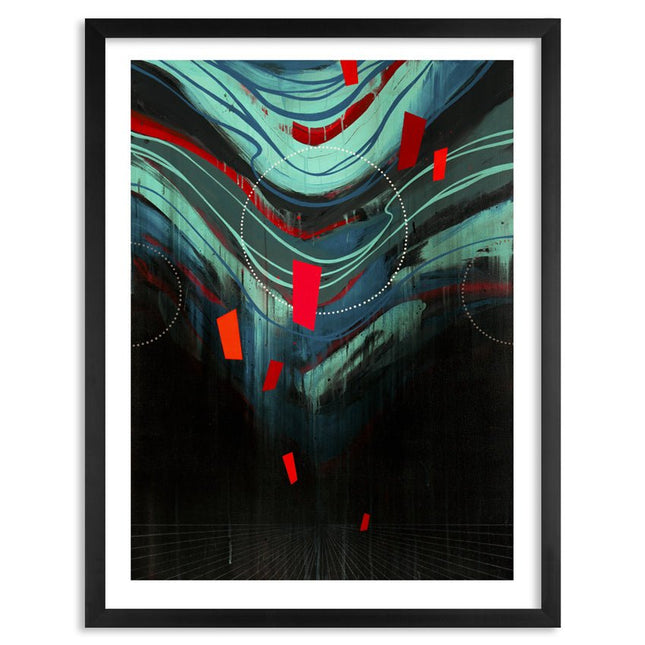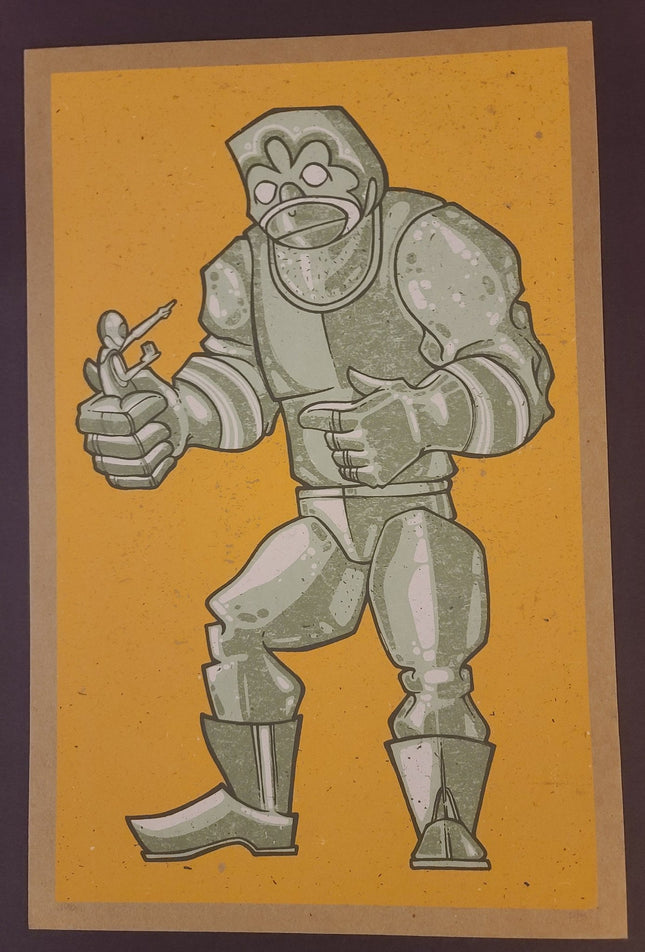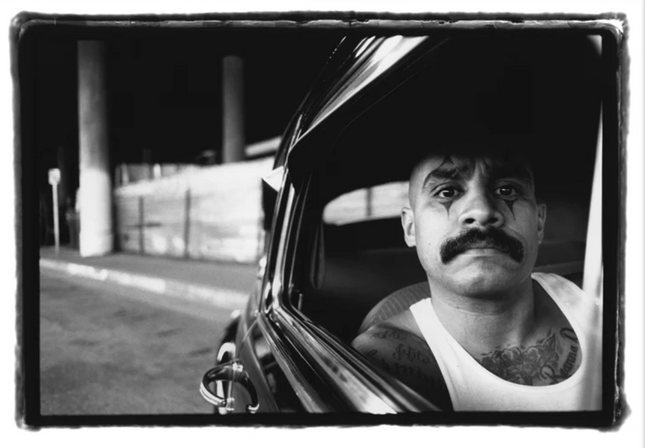
Mexico

Erik Otto Fluxus Archival Print Print by Erik Otto
Fluxus Limited Edition Archival Pigment Prints on 310gsm Fine Art Paper by Erik Otto Graffiti Street Artist Modern Pop Art. "This piece was one of 1 of 9 paintings I produced for my last show, DISTANCIA, that took place in an abandoned building in Mexico City at the start of this year. Every piece in the show had a similar second piece that was slightly altered to create a visual rhythm, but this painting was the one wild card piece that stood proudly on its own. For me, this piece was the one piece that summed what the entire show was about — breaking away from the structure to give way to a new perspective and flow while finding peace in the process." - Erik Otto
$270.00

John Vogl Lucha Libre Wrestler Silkscreen Print by John Vogl
Lucha Libre Wrestler Limited Edition 3-Color Hand-Pulled Silkscreen Print on Brown Speckled Fine Art Paper by John Vogl Graffiti Street Artist Modern Pop Art.
$129.00

Estevan Oriol Rascal In The '47 Fleetline PP Archival Print by Estevan Oriol
Rascal In The '47 Fleetline PP Printer Proof Archival Print by Estevan Oriol Limited Edition Print on 290gsm Moab Entrada Fine Art Paper Pop Artist Modern Artwork. PP Printers Proof 2018 Signed & Marked PP Limited Edition Artwork Size 24x17 Archival Pigment Fine Art Unveiling Street Narratives in Art Street Pop Art and graffiti Artwork are distinctive in contemporary visual culture, often blurring the lines between high art and everyday urban experience. The work "Rascal In The '47 Fleetline" by Estevan Oriol is a striking example of this genre, where the imagery is as potent in its aesthetic as in its cultural commentary. This particular piece is an Archival Print, a Printer's Proof (PP) from 2018, and it brings forth a raw and unfiltered look at street culture through the lens of modern art. Estevan Oriol's artwork captures the essence of the street in a manner that conveys authenticity and a gritty realness often absent in traditional art forms. The '47 Fleetline, an automobile that resonates with Chicano culture and the lowrider community, becomes a canvas for expressing identity, resilience, and pride. Oriol's subject, Rascal, is not merely a figure but a representation of a larger narrative that speaks to the experiences of those often marginalized in society. The intensity in Rascal's gaze and the sharp detail of the tattoos that adorn his skin tell a personal and collective story. Technique and Medium in Street Pop Art The technical aspects of Oriol's print are as notable as the subject matter. The choice of 290gsm Moab Entrada Fine Art Paper is deliberate, offering a weight and texture that gives depth to the black and white imagery. The archival pigment used in the print ensures longevity, allowing the piece to stand as a historical document of the era it represents. Oriol's signature and the print marking as a Printer's Proof signify its exclusivity and role as a collectible piece within the world of street pop art. Cultural Resonance of Graffiti Artwork While not graffiti in the traditional sense, Oriol's work holds a similar energy and impact. The term 'Graffiti Artwork' often conjures images of spray-painted walls and tagging, yet it has evolved to encompass a broader spectrum of visual street expressions. With its careful composition and stark contrasts, Oriol's print communicates graffiti's defiance and boldness. It is a fixed moment of street culture, elevated to art, yet unremoved from the asphalt and concrete that form its backdrop. The intersection of street culture with the art world, as seen in Oriol's "Rascal In The '47 Fleetline," is a testament to the evolving perceptions of what constitutes fine art. This limited edition piece is not just a representation of a moment or an individual but a profound commentary on the society from which it emerges. It captures the spirit of street pop art and graffiti artwork, making a statement that is felt as much as it is seen.
$750.00




